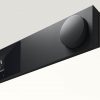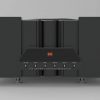In 2005, only 4% of the world’s homes that made their broadband connection over fiber-to-the-home received video services. By the end of 2011, according to a new study from ABI Research, that figure will be 55%.
According to ABI Research principal analyst Michael Arden, this increase will primarily be the result of a business model argument for operators. The cost of installing video equipment, though not insignificant, is only a relatively small addition to the basic cost of installing fiber-to-the-home access equipment. Arden says, “Companies are going to considerable expense to deploy fiber-to-the-home; spending a little more to establish a video network helps them to pay off the access network investment. That’s why wherever you see a fiber-to-the-home deployment today, the service providers are talking about offering triple play services.”
However, this growth will not play out in the same way in all parts of the world. Although Japan and South Korea have the world’s highest rates of FTTH deployment, the regulatory environment in those countries prevents the addition of most television services. In an effort to protect the market positions of cable and satellite operators, their regulatory regimes prevent operators from offering TV except in the limited form of video-on-demand. China too shows great potential, but its government is also limiting the licenses it is issuing to telecom operators.
“We will see higher video-over-fiber take-rates in regions such as North America and Western Europe, particularly Scandinavia, where the regulatory climate is more favorable,” forecasts Arden.
In the US, the only stumbling blocks for a company such as trend-leader Verizon are the franchise agreements required to offer video services. Verizon has been working hard to secure a multitude of franchise agreements at the local level, and has also been highly focused on obtaining statewide and nationwide franchises. Arden concludes, “By the end of our forecast period, there’s no reason why every home that gets fiber-to-the-home from Verizon couldn’t also receive video.”
ABI Research’s new study, PON and Active Ethernet FTTH Deployments, explores the trends driving FTTH adoption, regional deployment patterns, the value of the FTTH market, and the cost structure of FTTH. It includes analysis of subscriber growth for BPON, EPON, GPON (GEPON), and active Ethernet. It forms part of two ABI Research Services: Broadband Networks and Multi-Channel Video, which include Research Reports, Research Briefs, Market Data, Online Databases, the ABI Vendor Matrix, ABI Insights and analyst inquiry support.
Founded in 1990 and headquartered in New York, ABI Research maintains global operations supporting annual research programs, intelligence services and market reports in broadband and multimedia, RFID & contactless, M2M, wireless connectivity, mobile wireless, transportation, and emerging technologies. For information visit http://www.abiresearch.com, or call +1.516.624.2500.























